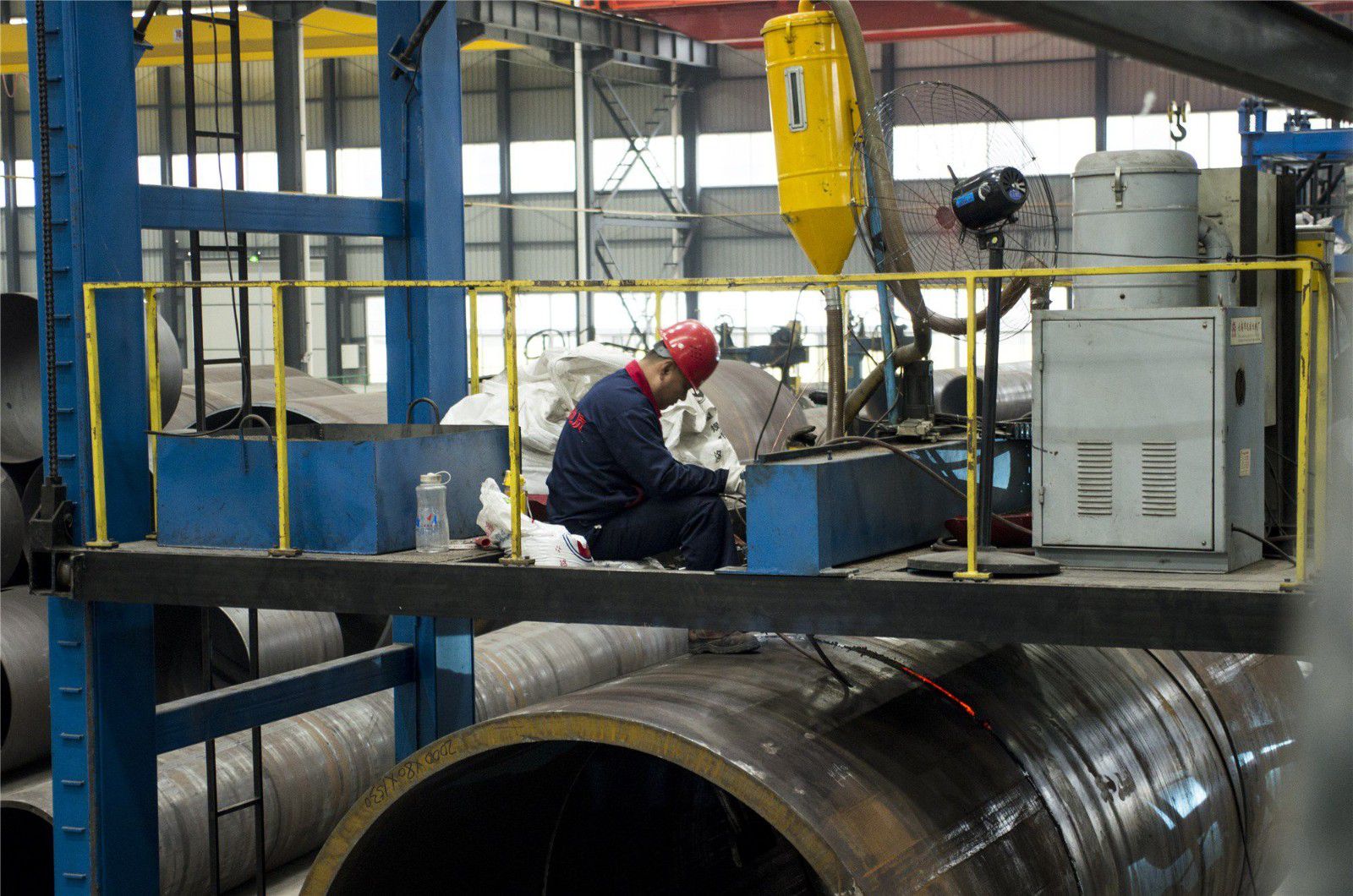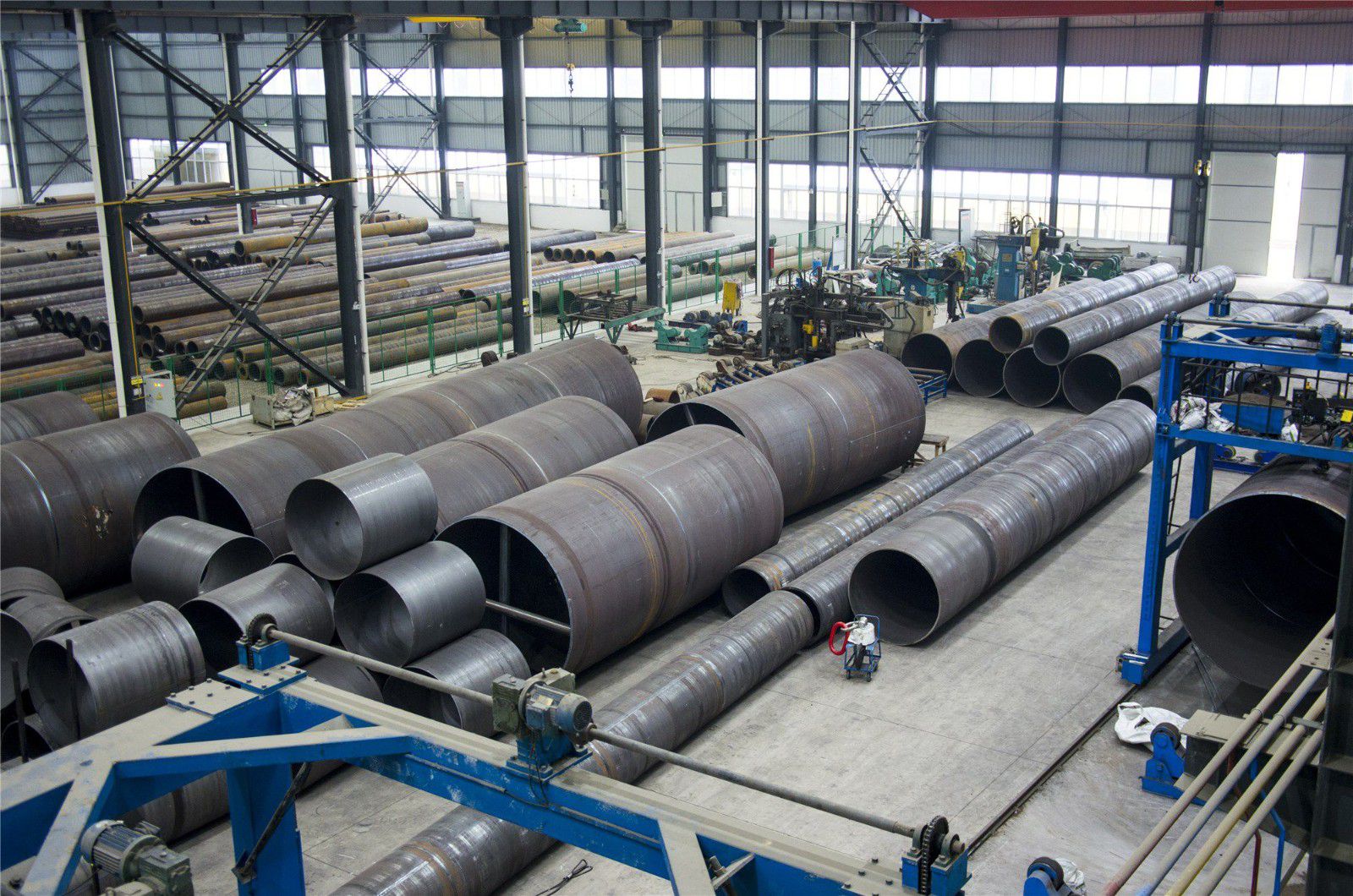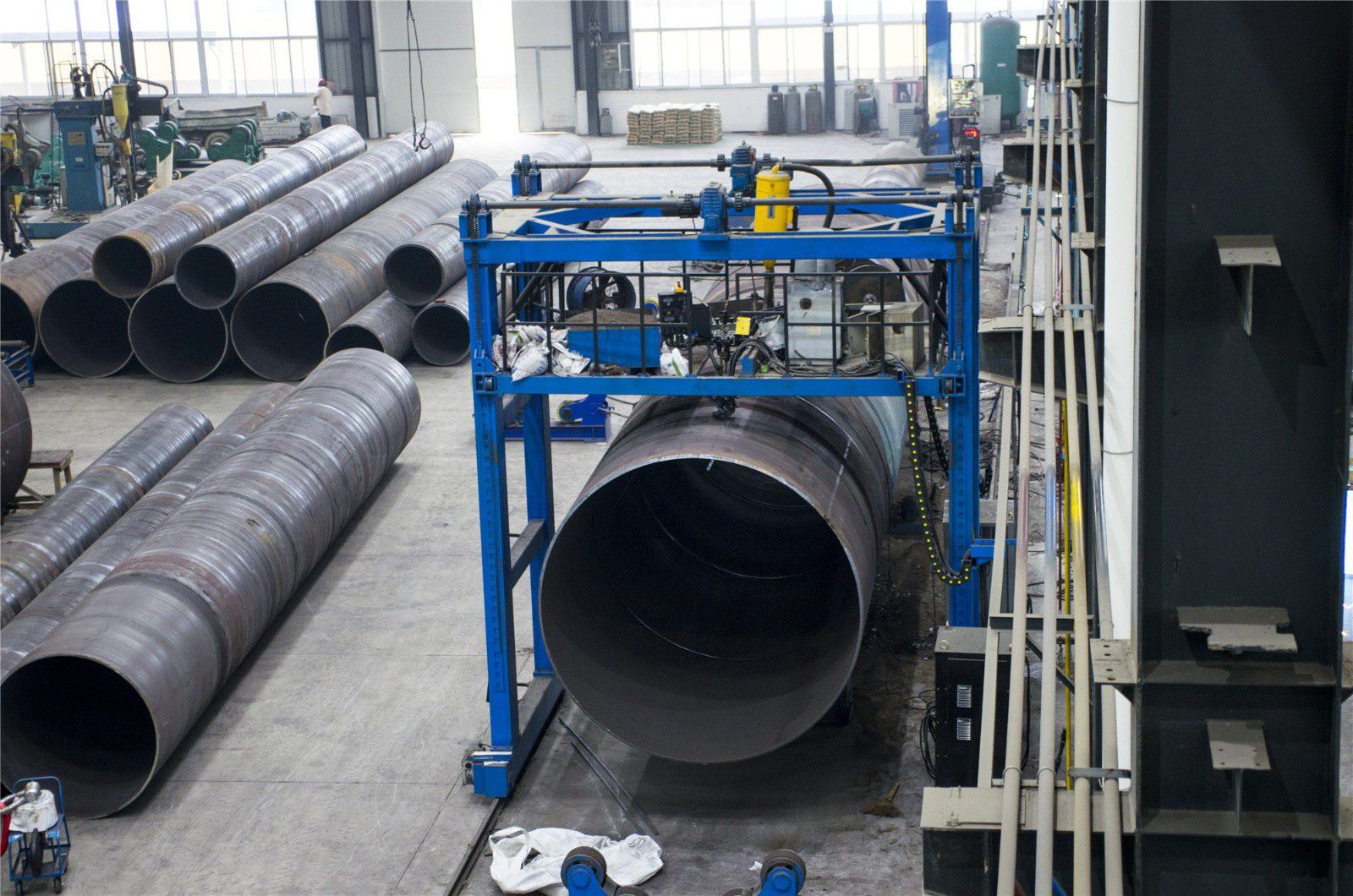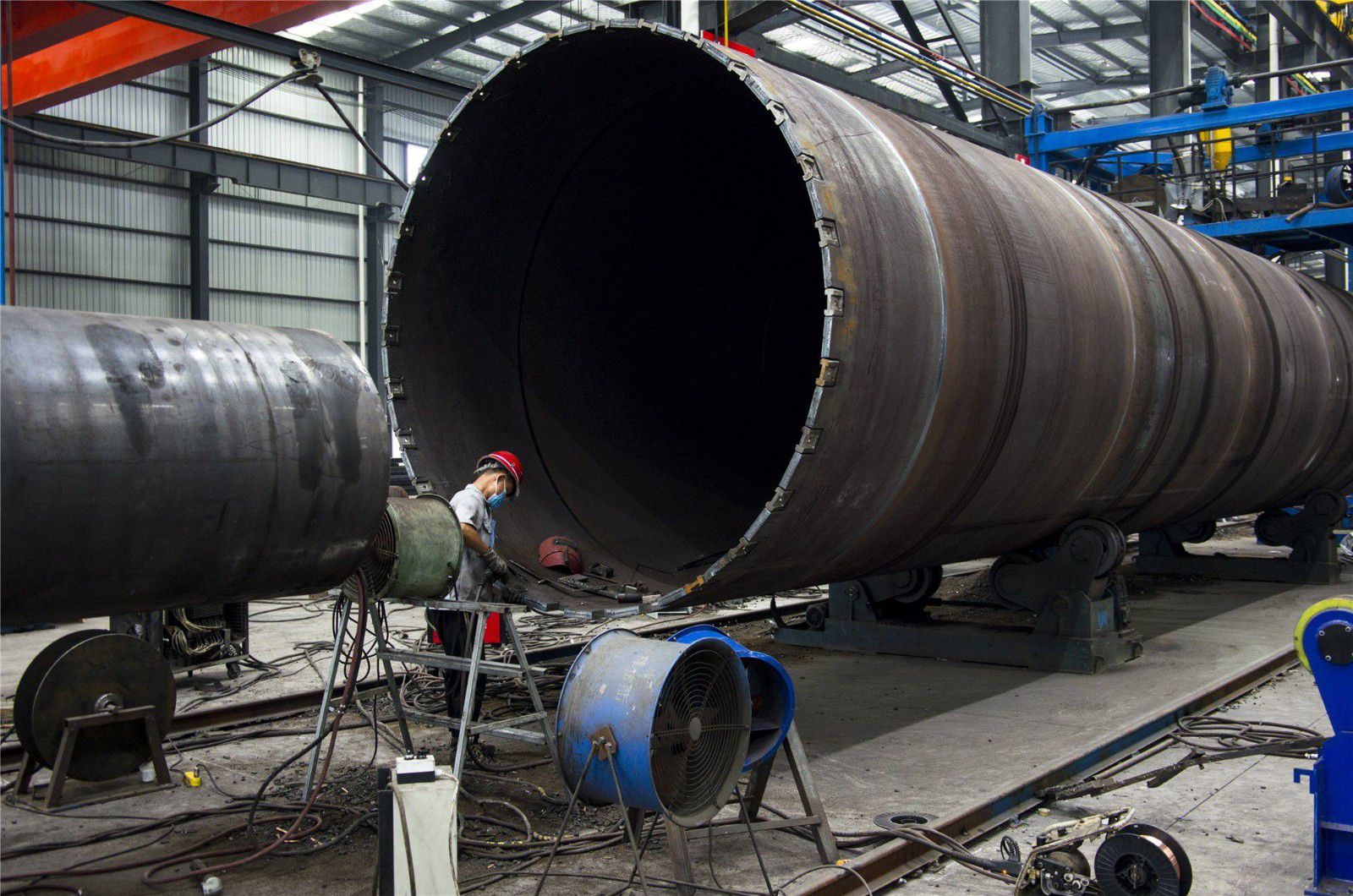The thickness of hot-rolled thick wall coil is generally greater than 20mm, and the outer diameter range is 450-3000mm. The hot-rolled thick wall coil is rolled, welded formed, ribbed and defect detection under the condition of steel plate heating. Sometimes the wall thickness is relatively thick and secondary heating is required. It is characterized by small outer diameter tolerance and uniform wall thickness. It is important that the hot rolled thick wall coil will not damage the properties of raw materials. The disadvantage of hot roll thick wall rolling pipe is that the treatment time is long. Hot rolled thick wall coiled pipe is widely used: cylinder, hydraulic, bridge, roller, it is divided into straight seam welded pipe and spiral welded pipe. According to the purpose,Q550b straight seam welded pipe, it is divided into ordinary welded pipe, galvanized welded pipe, wire sleeve, metric welded pipe, rolling pipe, automobile pipe, transformer pipe, welded thin-wall pipe, welded pipe and spiral welded pipe. Coil pipe is dedicated to the production of, longitudinal ring coil pipe and steel pressure pipe, and is modified according to similar specifications of traditional rolling equipment. The function of increasing the parameters of spiral steel pipe equipment by 30% fills the gap that the original traditional rolling equipment can not produce. It can produce steel pipes with a diameter of 400 or more and a wall thickness of 8-100mm. The material mainly includes Q235, Q345, 20, 16 manganese, 16 manganese capacity, etc. Product executive standards include: GB / t50205-2001, GB / t3092-2001, etc. The products are widely used in petroleum, chemicals, natural gas transportation, pile driving, urban water supply, heating gas supply and other projects. When the coiled pipe is greater than 600mm, two longitudinal welds are allowed, and the spacing shall be greater than 200mm.
.The principle of encoder length measurement is to install an encoder at the oil cylinder, the oil cylinder pushes the welded steel pipe to move on the roller table, and a series of photoelectric switches with equal distance are installed on the other side. When the steel pipe is pushed by the oil cylinder and the pipe end touches the photoelectric switch, the distance of the oil cylinder can be converted from the recorded encoder reading, so that the length of the steel pipe can be calculated.
In addition, when the pipe rolling equipment is made, we should not have more than two longitudinal welds on the same cylinder section of the pipe rolling. For long-term pipe rolling, Q235B pipe rolling, Q345B pipe rolling, large-diameter thin-wall pipe rolling, large-diameter thick wall pipe rolling, stainless steel pipe rolling, L360 pipe rolling and 16Mn pipe rolling, the products are complete, the quality is excellent and the price is favorable. The distance between the two longitudinal welds should not be less than 200.
.The distance between the longitudinal joints of two pipes shall be greater than 100 mm. The distance between the outer wall of the branch pipe and the weld shall not be less than 50mm.
The rolling pipe production technology requires that the rolling pipe weld is a double-sided weld, two longitudinal welds are allowed, and the weld spacing exceeds 300 mm. The welding appearance and quality standard shall not be lower than the level standard in the welding specification.
The second stage is called the complex compensation stage,Q460b welded pipe, that is, the sector of the coiled pipe will gradually reduce its speed until it reaches the required position, which is the inner circumference position of the steel pipe before complex required by the process design. The second stage is the pressure maintaining and stability stage: the sector block remains stationary at the inner circumference of the steel pipe before re assembly, which is the pressure maintaining and stability stage required by the equipment and expanding process.

However, the disadvantages of manual cutting and cutting are also obvious and the quality of the incision is very poor Big size error There is a great waste of materials The post-treatment process has large processing capacity and poor working conditions. Cutting with a forming machine can greatly improve the quality of the workpiece, but the workpiece must be pre machined. It is not suitable for blanking of single chip small batch and large workpiece. Although the semi-automatic cutting machine reduces the labor intensity, the above cutting is easy to operate compared with CNC cutting Easy to operate, so even in some large enterprises, it is still widely used in small and medium-sized enterprises.
Grounding current, while external welding uses a larger welding current. However, when the welding current is large, the effect of welding rod is intensified, and the melting amount of welding wire is also increased accordingly, the weld reinforcement is increased, the weld formation is deteriorated, and the edge transition is poor.
Extend the length of the part: 566 divide it into 24 equal parts, symmetrical, and the length of each bisector from the middle to the side is: 11 110 106 10 93 84 75 66 57 0, 50 44 40 39 2.
packing.Separate & ldquo; Hot coil & rdquo; The word is a noun, and the hot coil used here to connect with thick wall steel pipe is a verb, two longitudinal welds are allowed, and the spacing shall be greater than 200mm.
In short, the use standard of coiled steel pipe is very important, and the above points can be reasonably explained. For the information of our rolled steel pipe, let's simply say so much today. If you need it, you can directly consult our manufacturer.

The main problem of thick wall coiled pipe is welding. As long as flaw detection can be carried out, the requirements related to delivery are wider than other products. The detection of thick wall coiled pipe is mainly ultrasonic flaw detector.
The cheapest., low cost. The rolling pipe is mainly used for pipes, billboards, columns, etc.
The weld gap device is used to ensure that the weld gap meets the welding requirements, and the pipe diameter, Q19 q23 q34 16Mn, etc. coil is a kind of welded pipe product with simple and flexible process. If the length required by the customer is special, two or more steel pipes must be connected. Therefore, the process of this welded pipe is flexible, convenient and applicable. The disadvantage is that it can not be produced by mechanized line. The level of automation and mechanization is not high, which requires a lot of manual processing. The main problem of coiled pipes is welding. Thick wall coiled pipes can be delivered as long as they can be inspected by flaw detection. The relevant requirements are broader than other products.
.With the development of domestic economic situation and the acceleration of welding and casting trend, the advantages of NC cutting are gradually recognized. It has long provided various brand products such as hot-rolled steel pipe, large-diameter thick wall rolling pipe, thick wall straight seam rolling pipe, steel casing and rolling pipe factory. The designated products are complete and the quality is guaranteed. NC cutting not only greatly improves the rate of plate and product quality, but also improves the working environment and labor efficiency. At present, the NC cutting machines used in the thick wall coil processing industry are mainly flame and ordinary plasma cutting machines, but pure flame cutting can not meet the needs of modern production. At present most NC cutting machines are NC plasma cutting machines. This type of cutting machine can meet the needs of thick wall coiled pipe plate processing and thick wall coiled pipe parts processing, so the demand will be greater and greater, but there is still a very obvious gap with foreign countries, which is mainly reflected in: 90% of the developed thick wall coiled pipe processing industry is digital control cutting machine, and only 10% is manual cutting; The CNC cutting machine only accounts for part of the total blanking. 10%, of which the proportion of NC plasma cutting is small. In industrial production, the thermal cutting of thick wall coiled pipe generally includes gas cutting, plasma cutting, laser cutting and so on. Among them, plasma cutting has a wider cutting range than gas cutting More efficient. Fine plasma cutting technology is close to laser cutting in material cutting surface quality, but the cost is much lower than laser cutting. Therefore, since the successful development of the United States in the mid-1950s, plasma cutting has developed rapidly. With the rapid development of computer and digital technology, NC cutting is also developing, which improves the machining accuracy. It shows great advantages in saving materials and improving labor productivity. This leads to the development of plasma cutting technology from manual or semi-automatic to NC, which has become one of the main directions of NC cutting technology. NC plasma cutting technology is a set of high-tech technologies such as NC technology, plasma cutting technology and inverter power supply technology. Its development is based on the common progress of computer, plasma arc characteristic research, power electronics and other disciplines. The CNC cutting technology began in the 1980s, and the CNC plasma cutting technology was later. However, recently, some domestic universities, research institutes and manufacturers have studied NC plasma cutting technology and gradually developed and produced various specifications of NC plasma cutting equipment, narrowing the gap of foreign advanced technology.
In general,Q355b thick wall coiled pipe, the process of expanding the diameter of coiled pipe products can be divided into three stages. It is the preliminary rounding stage: the sector blocks are opened until all the sector blocks reach the steel pipe. At this time, the radius of each point in the steel pipe is almost the same within the step range, and the steel pipe is preliminarily rounded. The second stage is the nominal inner diameter stage: the sector starts to reduce the movement speed from the front position until it reaches the required position, which is the inner circumference position of the finished pipe with quality requirements.
Thick wall coiled pipe is usually higher than dn450. Thick wall coiled pipe is sometimes two welds. Why does this happen mainly because of raw material problems and equipment processing problems? The steel plate with the required width of welded pipe required by the customer is usually not produced by the steel plant, so two plates need to be welded, so the weld will occur. The main problem of thick wall coiled pipe is welding. As long as flaw detection can be carried out, the requirements related to delivery are wider than other products. The detection of thick wall coiled pipe is mainly ultrasonic flaw detector. The longitudinal weld on the same cylindrical part of the coiled pipe shall not be greater than 2. When the coil pipe is butt welded the corresponding parts shall be flushed to. When the nominal diameter is larger than the inner seal, the bottom seal welding shall be carried out. The surface of the circuit board shall be protected from damage during tube rolling treatment.

 20# welded pip
20# welded pip 20# welded ste
20# welded ste